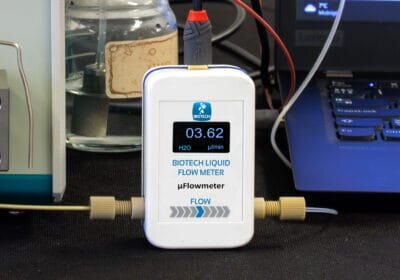~ How resistor technology supports a cleaner yachting industry ~
Despite an Indiana University study showing a luxury superyacht produces around 7,000 tonnes of carbon dioxide each year, the vessels are exempt from many maritime emissions regulations. While efforts to reduce their environmental impact have progressed in recent years, the industry is still far from sustainable. Here, Mike Torbitt, managing director of marine resistor manufacturer Cressall, explores the progress the yachting industry has made, and what more can be done to improve its environmental credentials.
A superyacht’s annual carbon dioxide (CO₂) emissions — which campaigners claim are 1,500 times greater than that of a standard family car during the same period — prove problematic. With an estimated 10,800 yachts afloat in 2022, around 5,400 of which are superyachts of over 30 metres, the combined CO₂ emissions will have a significant impact on global temperature increases.
It’s not only CO₂ that presents a problem for the yachting industry, however. Diesel-powered yachts produce high levels of nitrogen oxide (NOx), known to cause respiratory problems and acid rain. International Maritime Organisation (IMO) legislation brought in during 2021 that limits NOx emission levels has threatened the viability of superyachts in recent years. Other marine vessels such as cargo ships use selective catalytic reduction (SCR) to convert NOx into water and nitrogen. However, since this method requires high exhaust temperatures to decompose the exhaust fluid, it has been less successful in yachts due to a lower average engine load.
To ensure a thriving and sustainable future for yachting, it is time for the industry to move away from fossil fuels. But how can this be achieved?

OLYMPUS DIGITAL CAMERA
More sustainable sailing
Industry decarbonisation has seen some promising developments in recent years, with the number of electric boat listings more than doubling between 2021 and 2023, according to boats.com data. This includes an increasing number of tenders using electric propulsion systems to transport passengers between the port and the yacht.
While decarbonising the yachts themselves presents a greater challenge due to their size and range of onboard facilities, there has been significant progress on this front with the development of solar-powered yachts.
With a predicted market value of 2.4 billion USD by 2031, solar energy charges the lithium-ion batteries used to power these ship and their facilities. Some recent models have seen Li-ion batteries replaced with hydrogen fuel cells, which offer improved energy density and range.
However, these recent innovations are not without issues. Although a solar yacht can fully benefit from sunlight when on open water, the position of other boats can block light from the vessel while it is docked. Additionally, during rapid acceleration or deceleration, hydrogen fuel cells’ power output increases gradually to a point, but then begins to oscillate. This fluctuating power output can cause reliability issues.

Increasing reliability with resistors
Dynamic braking resistors (DBRs) can help to tackle both problems. To maximise solar efficiency, it is beneficial to place the panels on the ground or sides of the boat so that they can be motor controlled to follow the sun’s position throughout the day. DBRs ensure that the positioning process is safe and precise, by dissipating the excess energy generated as the motors decelerate. As a result, more solar energy can be converted to power the yacht.
DBRs can also be used to overcome hydrogen fuel cells’ reliability issues and fluctuating power output. To make sure the yacht’s power requirements are always met even in the case of output oscillation, it is possible to install a fuel cell that exceeds these requirements. However, this option also requires a DBR to dissipate the excess energy when it is not needed.
Cressall’s EV2 DBR offers an ideal solution, as its modular design means that a number of units can be combined to fulfil power requirements of up to 125 kW.
As a water-cooled solution, it does not require fans to dissipate heat, making it lightweight and compact. With ten kilowatts (kW) of power per cubic decimetre (dm3) and 9.3 kW of power per kilogram, it avoids increasing the yacht’s load.
The yachting industry’s long history of excessive emissions once made the idea of sustainable yachts seem like a paradox. However, supporting renewable yachting innovations with resistor technology will finally make high-performance, low-emission yachts a possibility.
To discover how Cressall’s DBRs can support your marine application, visit the website.








